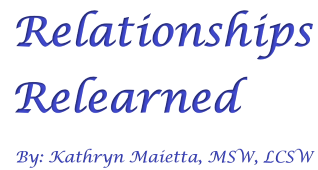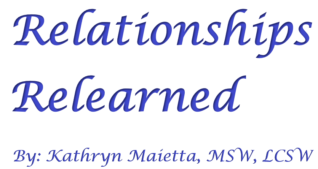Have you ever heard the saying, “Attack the problem, not the person”? Historically this has been how problems have been confronted and solved.
Somewhere along the way, there has been a not-so-subtle shift to attacking the person instead of attacking the problem. Maybe this shift has occurred because:
- The problem has become too complex to solve, so let’s attack the person who disagrees.
- The problem is “faceless”, but there is a person standing in front of you that you could attack.
- The problem is too much of a moving target. The boundary lines are blurry and constantly changing. Ah, but there is a person standing right there in front of you. Certainly, the person is an easier target.
Micro or Macro?
Concerns in life can be either macro or micro. Micro concerns are the things that affect you personally, for example, your significant other cheats on you or your job is eliminated. Macro concerns are the issues that are large and affect many people, for example, immigration or climate change.
Attacking a person is considered attacking on a micro level. Attacking a problem is considered attacking on a macro level.
Perhaps examples would be helpful in discussing attacking the problem and attacking the person.
Example One
Recently, I was at a doctor’s office waiting to be seen for my appointment when I overheard two people talking. While the discussion could have been about 100 different problems relating to the border, the discussion was exclusively, “Trump is to blame for this!” or was it “Biden is to blame for this!”?
I really don’t remember which statement it was, because for the purpose of this discussion, it doesn’t really matter. The point is, when the discussion stays on an individual, all the energy in the room goes toward vilifying the person, Trump or Biden, vs. solving the problem at the border.
Example Two
A recent news article caught my eye about an incident in Chicago: “Hundreds of young people descended on the Millennium Park area for a “Teen Takeover” event on Saturday night. Videos posted on social media showed teenagers fighting in the streets, jumping on the roof of a bus, breaking into vehicles and setting them on fire.” https://www.newsweek.com/brandon-johnson-response-chicago-teen-takeover-condemned-1794718
The tweeted response from then Mayor-Elect Brandon Johnson read: “…. It is not constructive to demonize youth who have otherwise been starved of opportunities in their own communities….” In this situation, is the problem the destructive behavior of the individuals (the teens) or is the problem the lack of opportunities for youth in Chicago?
Viewing a situation from a micro or macro perspective determines what action you will take to resolve the situation.
The Person (Individuals)
It is easy to focus your angst and attention on the person you believe made a mistake or the individual you believe is making your life more difficult.
The behavior of individuals can certainly create problems! When there is an individual involved, you have a specific direction to vent. You have an individual to focus on. If the focus of your angst is an individual, you could confront him/her.
Example Three
An individual keeps calling you to tell you your car warranty is about to run out. You don’t even have a car. It is just a robo call.
You have options: you can block their number on your phone, you can explain you are not interested and hang up, you can become verbally abusive to the person calling or you can ask for their home phone number so you can call them back when they aren’t at work.
The Problem
At the other end of the spectrum from focusing on an individual is focusing on attacking the problem. Attacking the problem means looking at the big picture. It may mean losing a battle (with individuals), but winning the war (solving a problem).
As annoying as car warranty people are on the phone, they are employees of a business hired to make these pesky calls. They are doing their job and whatever you say to them won’t change anything, including robo calling you! It is their job to repeatedly call you.
When enough people attacked the problem of robo calling, laws were enacted limiting the times they could make these pesky, annoying calls to between 8 a.m. and 8 p.m. The global problem is not eliminated, but it is more tolerable.
Part of the Solution or Part of the Problem?
Attacking the person in a relationship is a common destructive behavior. Perhaps you have heard of the quote, “If you are not part of the solution, you are part of the problem”? Many find it much easier to focus on the blame game or on another individual.
Attacking people happens when you place the blame on the shoulders of an individual or a group of people. That person or group carries the blame of whatever happened. Your instinct is to vilify them.
Why can it be easier to blame a person than to attack a problem? There are three primary reasons:
- people frequently have different perspectives on situations resulting in misunderstandings
- strong personal, intimate emotions are usually involved, for example, jealousy or abandonment
- there is instant gratification when seeing a reaction from a person who is standing in front of you
Attacking a person may seem easier than attacking a problem, but done without skill, attacking a person may jeopardize any future relationship you have with that person. Keeping in mind that there are only four resolutions to any conflict, it will be important to remember to work only toward a win-win solution.
It is not so easy to confront a problem and see a response or change. It is easier to put on your battle armor and assume an individual is the problem than it is to sit down across from someone and negotiate an amicable resolution to a problem.
Relationships Relearned: Learn. Unlearn. Relearn
To be in a healthy and successful relationship, what you learned in childhood about relationships may need to be unlearned and relearned in a different way as an adult.
The following is an example about a parent-child relationship, but the same rules apply for an adult-to-adult relationship.
As a child, you may have been repeatedly told to take responsibility for your actions. If you stole a candy bar from a store, your parents would march you back to the store, make you apologize and then make you pay for the candy bar. You learned you were responsible for your behavior.
However, an alternate perspective is attacking the problem. Let’s say as a child you stole a candy bar from a store and your parents found out. If your parents looked at the situation from a more global, problem-focused perspective, your parents said it was the store’s fault for placing candy bars within the reach of small children, or the store has plenty of money, they won’t miss the profits from one candy bar, or because candy bars have gotten so expensive, no one can afford them anymore! As a child, you learned little is your fault.
Take Away Point
Problems can never be solved when two people view a situation from very different perspectives. When this happens, the focus will always be on the conflict vs. the resolution. If you find yourself in a situation that doesn’t feel like it can be resolved, step back. Then ask yourself, “Are we both focusing on the same thing, the person or the problem?”
With warmest regards,
Thank you so much for reading this blog. If you enjoyed the content, please check out other blogs at:
https://relationshipsrelearned.com/my-blog/
https://rvingnomads.com/blog/
You can view my books on my Amazon Authors Page or go to the books tab at the top of this page
To be notified of future posts, please enter your email address and click on the Subscribe button.












